The vast and mysterious world beneath the ocean’s surface is teeming with life, much of which we still have yet to discover fully. However, many of these incredible species are on the brink of extinction due to human activities such as overfishing, pollution, and climate change. As stewards of the Earth, it is crucial to understand and protect the marine biodiversity that sustains our planet’s health. Here are 15 ocean species that could soon disappear forever.
1. Vaquita
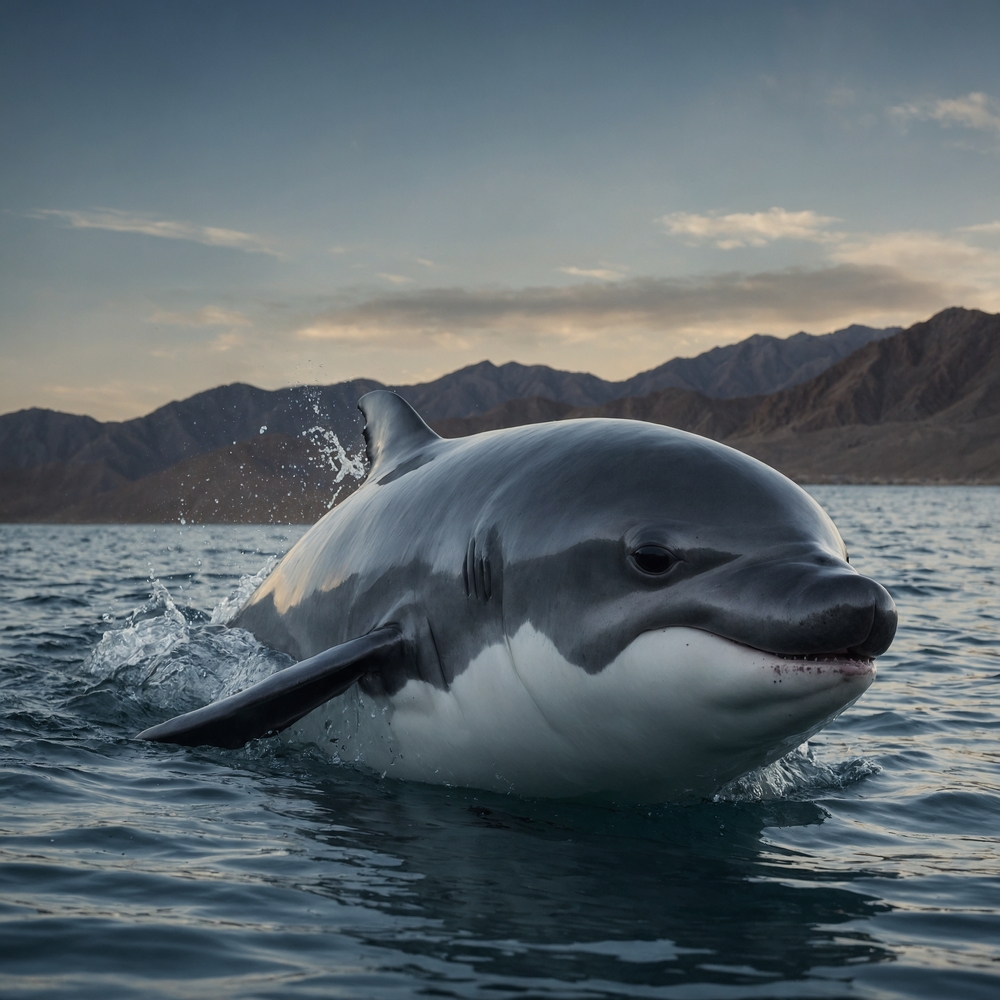
The vaquita, a small porpoise endemic to the northern Gulf of California, is currently the world’s most endangered marine mammal. With fewer than 10 individuals estimated to be alive, their decline has been primarily driven by gillnet fishing, which inadvertently traps and kills these porpoises. Conservationists have been working tirelessly to save the species, but the challenge is immense due to illegal fishing activities targeting another endangered species, the totoaba fish. According to a report by the World Wildlife Fund, immediate and strict enforcement of gillnet bans is crucial for the vaquita’s survival.
Despite their critically low numbers, there is hope that the vaquita can be saved if urgent action is taken. You might feel a sense of helplessness when faced with such dire statistics, but supporting organizations working on the ground can make a difference. The plight of the vaquita also highlights the broader issue of how our demand for certain products can inadvertently affect other species. It serves as a reminder of the interconnectedness of ecosystems and the unintended consequences of human activities.
2. Hawksbill Turtle
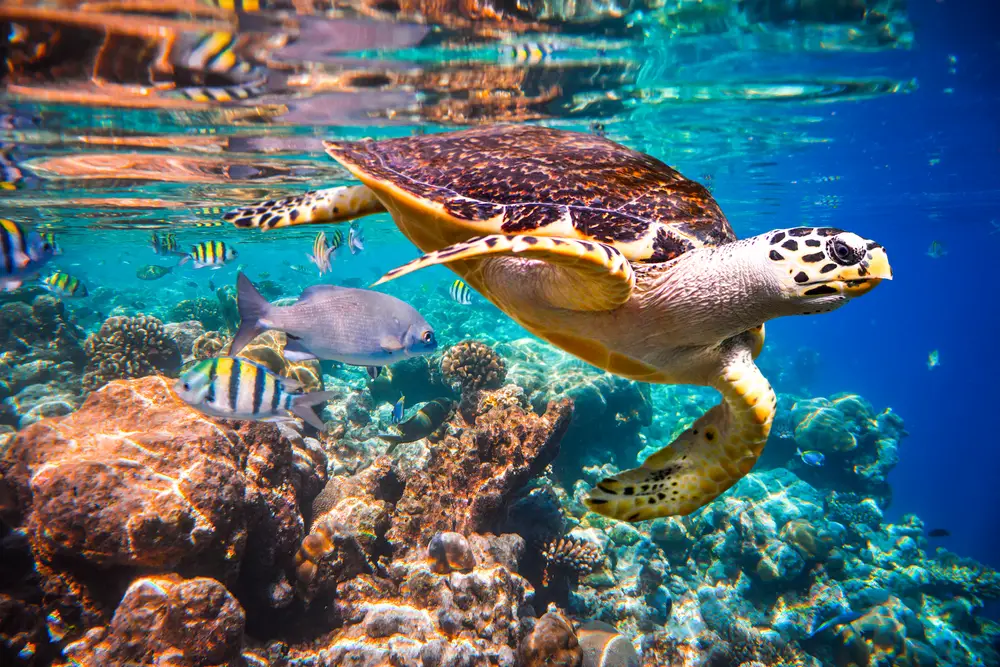
The hawksbill turtle is known for its strikingly beautiful shell, which has unfortunately made it a target for illegal poaching. Found mainly in tropical coral reefs, these turtles play a crucial role in maintaining the health of their marine environment. Their feeding habits help control the sponge populations, which in turn support reef biodiversity. The loss of hawksbill turtles would mean a severe ripple effect on coral reef health worldwide.
Your fascination with these creatures might inspire you to learn more about marine conservation efforts. The turtles’ plight is a sobering reminder of how human desires for luxury items can lead to significant ecological damage. By choosing sustainably-sourced products and supporting conservation initiatives, you can contribute to the preservation of these remarkable turtles. Every small action towards reducing your ecological footprint helps in this global conservation effort.
3. Giant Sea Bass
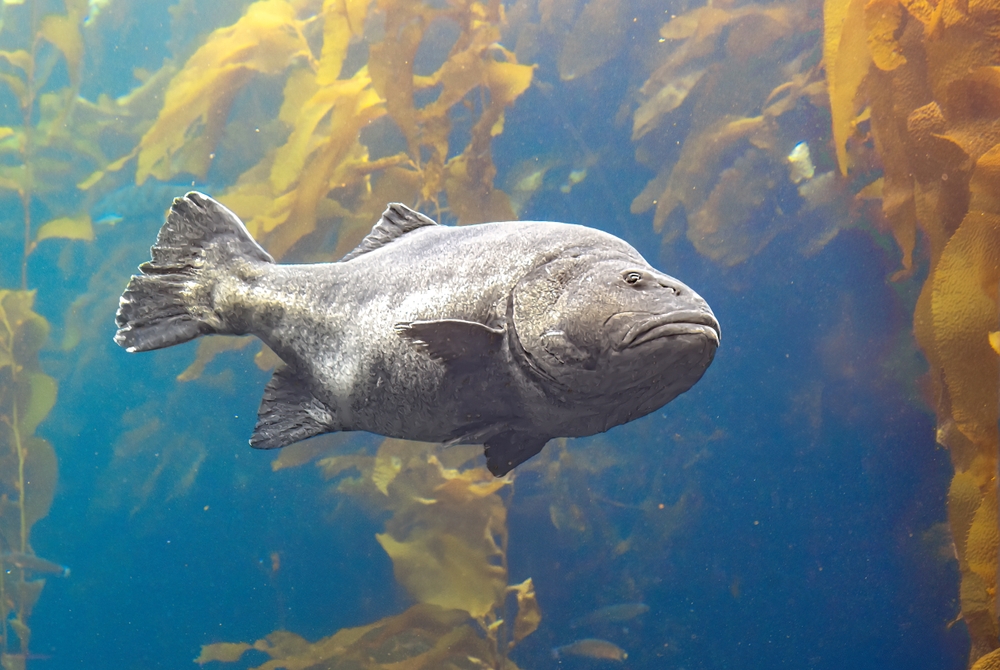
The giant sea bass, a massive fish inhabiting the waters off the coast of California and Mexico, is another species teetering on the edge of extinction. Decades of overfishing have led to a catastrophic decline in their numbers, with the population now estimated to be below 500. These fish are considered a keystone species, crucial for maintaining the balance of their ecosystem. A study published in the journal “Ecology” highlights the need for effective management plans to protect this vital species.
If you ever find yourself diving along the California coast, the absence of these majestic giants would be palpable. Their dwindling numbers signify the broader impact of unsustainable fishing practices. Efforts to revive the giant sea bass population involve strict fishing regulations and habitat protection initiatives. Supporting these measures not only aids in their recovery but also promotes the overall health of marine ecosystems.
4. Blue Whale
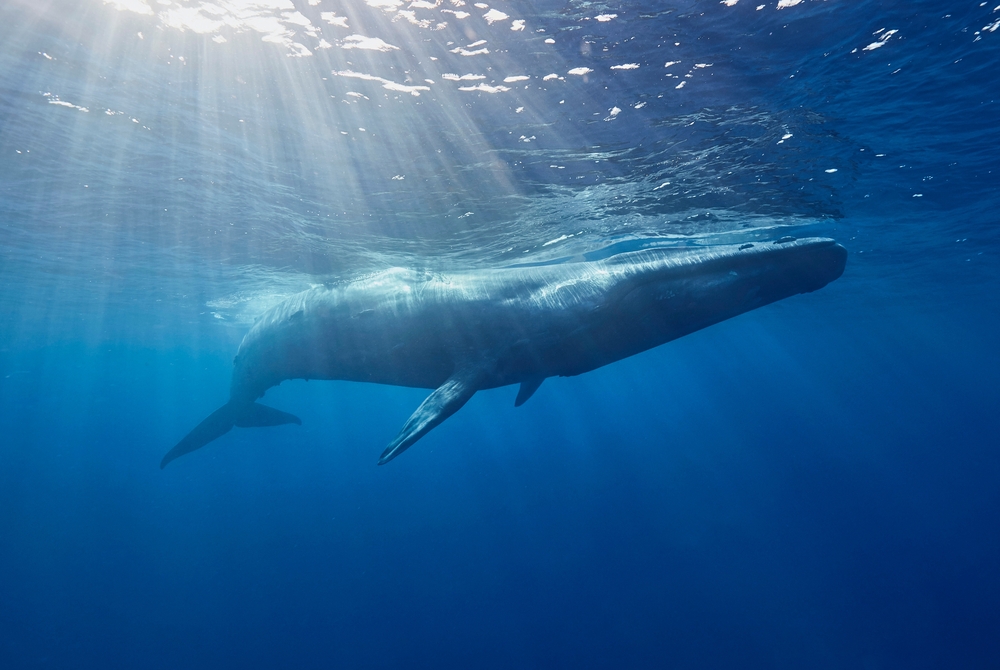
The blue whale, the largest animal to have ever existed, faces multiple threats that could drive it to extinction. Despite being protected from commercial whaling, these magnificent creatures are still at risk from ship strikes, entanglement in fishing gear, and the impacts of climate change. They rely on krill-rich waters, which are affected by rising sea temperatures and changing ocean currents. The survival of blue whales is a testament to the ongoing battle against the consequences of human-induced environmental change.
Imagining a world without the awe-inspiring presence of blue whales is unsettling. These gentle giants have captured the hearts of many, serving as a symbol of the ocean’s grandeur and biodiversity. Conservation efforts, such as implementing ship speed limits and creating protected marine areas, are crucial in ensuring their survival. By advocating for and supporting these initiatives, you can play a part in safeguarding the future of blue whales.
5. Dugong
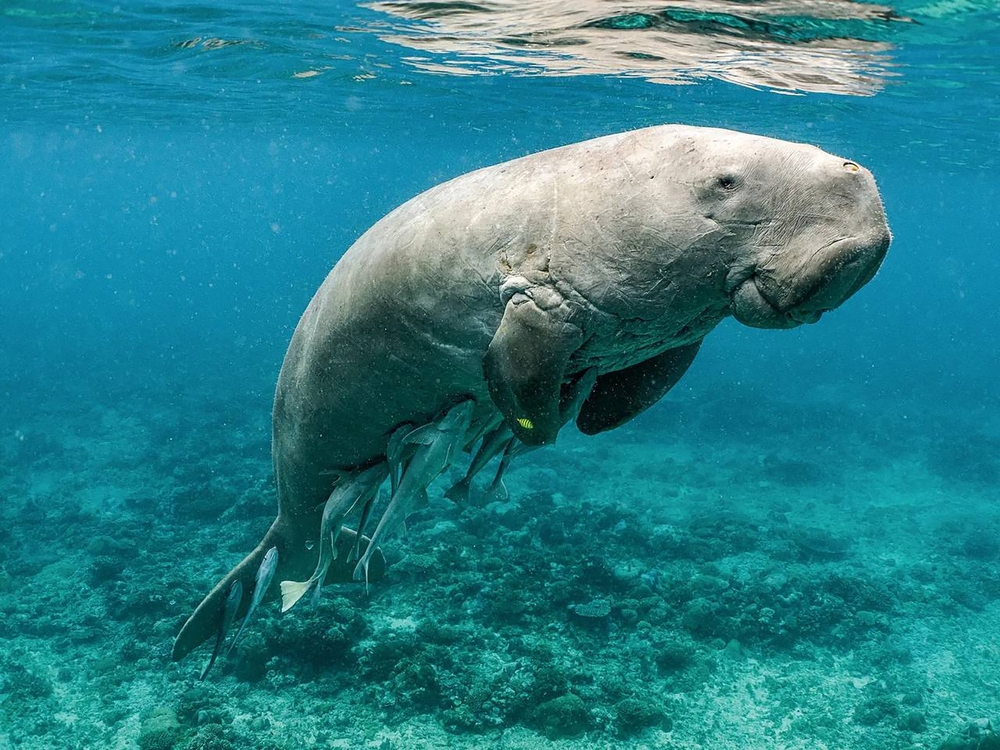
The dugong, a marine mammal closely related to the manatee, is primarily found in warm coastal waters from East Africa to Australia. Often referred to as “sea cows,” dugongs are essential for the health of seagrass ecosystems, which support a wide range of marine life. Unfortunately, dugongs are threatened by habitat degradation, entanglement in fishing nets, and boat strikes. A report from the International Union for Conservation of Nature highlights the need for immediate protection of their habitats to prevent further decline.
The gentle nature of dugongs makes them especially vulnerable to human activities. You might find it hard to believe that such a serene creature could be in danger, yet their plight is a stark reminder of the fragility of marine ecosystems. Protecting dugongs involves preserving their seagrass habitats and reducing human-induced threats. It’s a cause that requires global attention and cooperation, emphasizing the need for sustainable development practices.
6. Galápagos Penguin
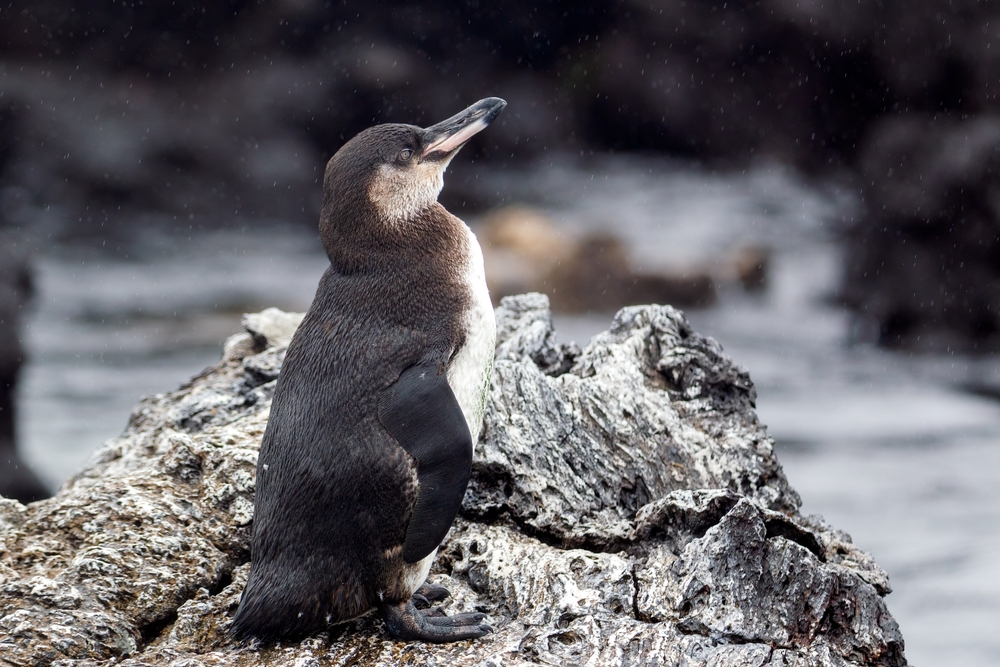
The Galápagos penguin, the only penguin species to live north of the equator, is under threat due to climate change and human activities. Changes in ocean temperatures impact their food supply, while human encroachment and introduced predators pose additional risks. These penguins have a unique role in their ecosystem, maintaining the balance of marine life around the Galápagos Islands. A decline in their population could disrupt this delicate balance, affecting various other species.
You may be fascinated by these charming birds and their ability to adapt to such a unique environment. However, their survival is inextricably linked to the broader health of our oceans. By supporting conservation efforts aimed at protecting their habitats and reducing climate change impacts, you can help ensure these penguins continue to thrive. It’s a reminder of how interconnected our actions and the natural world truly are.
7. Hammerhead Shark
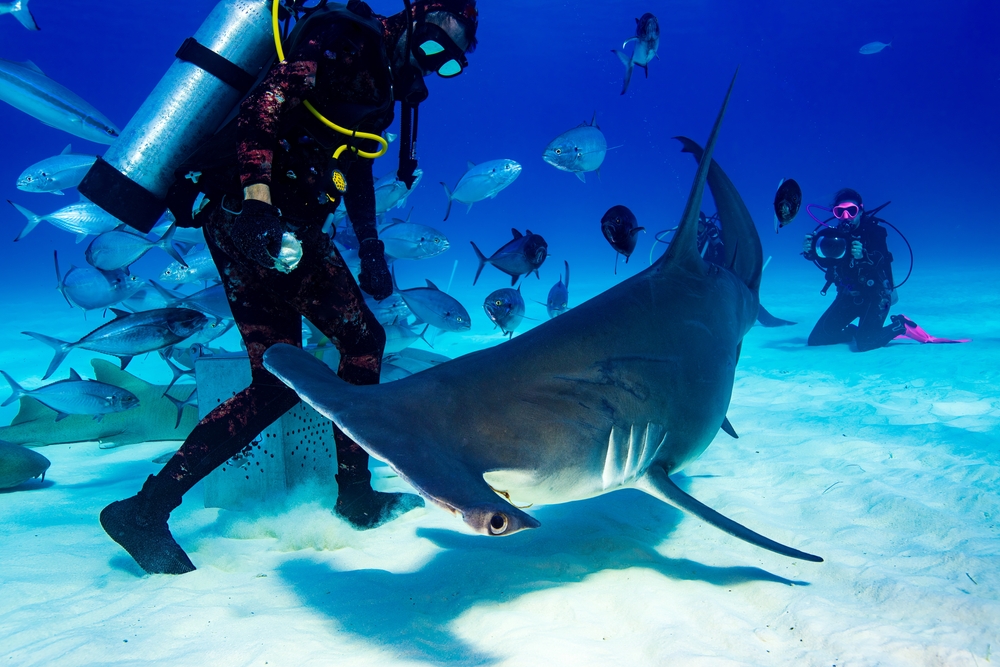
Hammerhead sharks, with their distinctive head shape, are some of the most recognizable and enigmatic creatures of the ocean. They are highly sought after for their fins, leading to significant declines in their populations due to overfishing. The loss of hammerhead sharks could disrupt marine ecosystems, as they are apex predators that help maintain the balance of oceanic food webs. A study in “Marine Ecology Progress Series” reveals that protecting these sharks is essential for the health of coral reef systems.
Your curiosity about these fascinating creatures might draw you to learn more about the critical role they play in marine life. The plight of hammerhead sharks is emblematic of the broader issue of shark finning and its devastating impact on ocean biodiversity. Advocating for stronger regulations against finning and supporting marine protected areas can aid in their conservation. By taking these steps, you contribute to the preservation of these vital ocean predators.
8. Northern Right Whale
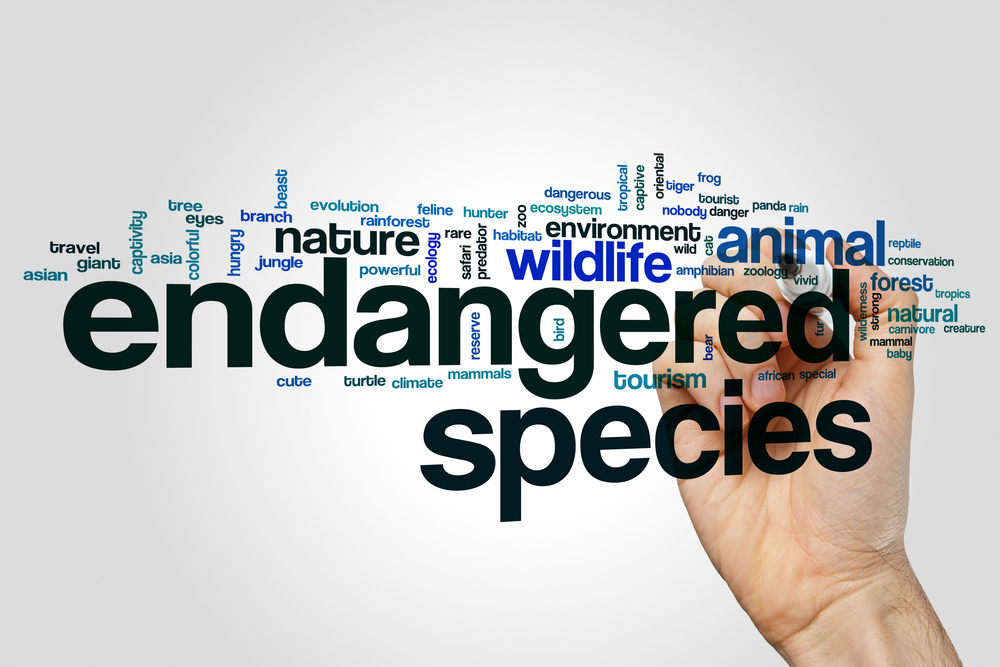
The northern right whale, once heavily hunted for its blubber, is now critically endangered due to ship strikes and entanglement in fishing gear. With fewer than 400 individuals remaining, their survival depends on concerted conservation efforts. These whales play a significant role in nutrient cycling, which supports the productivity of marine ecosystems. Protecting them is not only about saving a species but also about preserving a vital part of ocean health.
As you marvel at the majesty of these whales, it’s important to recognize the challenges they face. Their story is a poignant reminder of the long-lasting impact of human exploitation and the urgent need for sustainable practices. Conservation measures, such as altering shipping lanes and developing whale-friendly fishing gear, are crucial. By supporting these initiatives, you can help ensure that northern right whales continue to grace our oceans.
9. Coelacanth
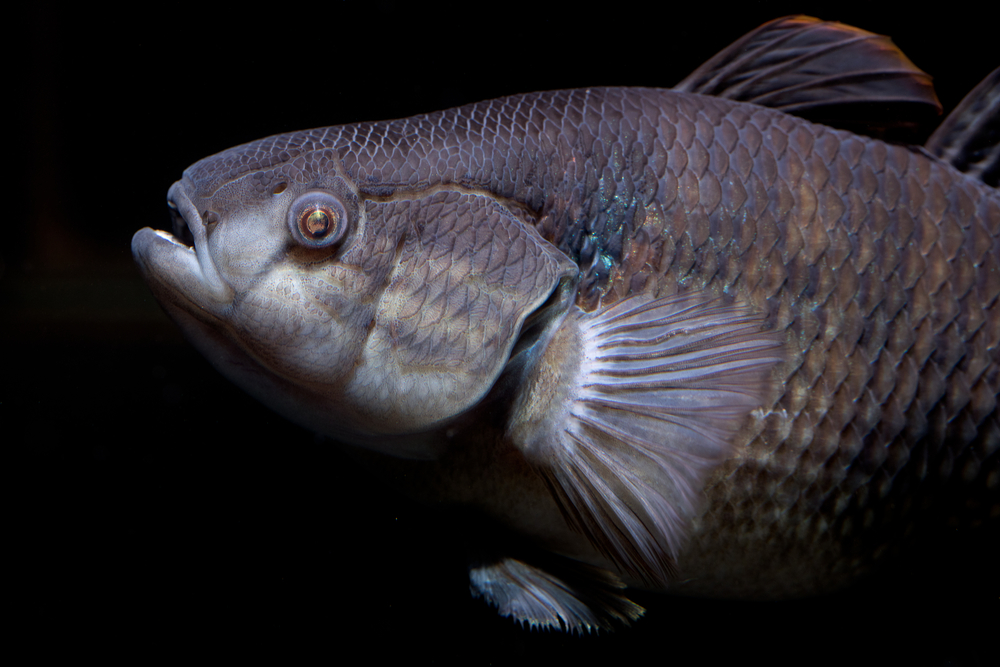
The coelacanth, once thought to be extinct, is a living fossil that provides a unique glimpse into the ancient history of marine life. Found off the coast of Madagascar and Indonesia, these fish are threatened by deep-sea trawling and habitat destruction. Their survival is crucial for understanding evolutionary biology and the development of land-based life. Losing the coelacanth would mean losing a vital link to our planet’s past.
Your intrigue about these prehistoric creatures might prompt you to delve deeper into their fascinating story. It’s astonishing to think that such a significant part of Earth’s history could vanish due to human activity. Efforts to protect the coelacanth involve regulating deep-sea fishing practices and promoting marine research. By raising awareness and supporting these efforts, you can help preserve this extraordinary species.
10. Atlantic Bluefin Tuna
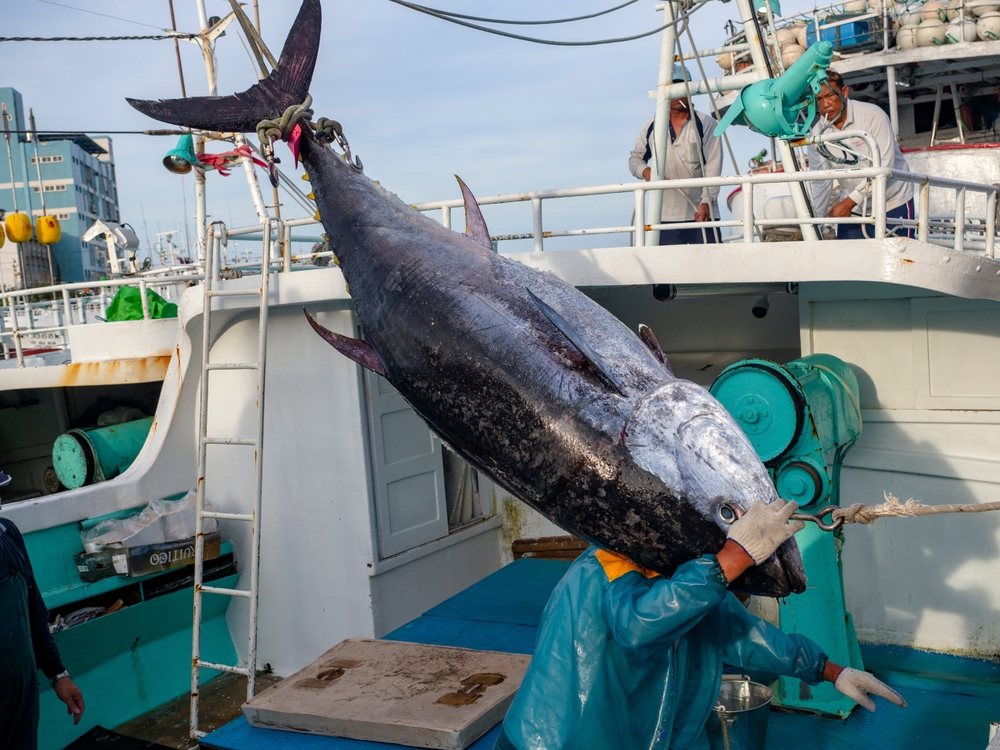
The Atlantic bluefin tuna, prized for its high-quality meat, faces severe overfishing that threatens its existence. This species is one of the fastest fish in the ocean, capable of crossing entire ocean basins. Despite international agreements to manage tuna stocks, illegal fishing remains a significant challenge. The decline of bluefin tuna populations is not just an issue of biodiversity but also affects the economic livelihoods of communities dependent on fishing.
You might be surprised to learn how coveted bluefin tuna is in global markets, driving unsustainable fishing practices. Their plight highlights the need for better enforcement of international fishing regulations and sustainable seafood choices. Supporting organizations that promote responsible fishing and fisheries management can make a significant impact. By choosing sustainably sourced seafood, you contribute to the long-term survival of bluefin tuna.
11. Great Barrier Reef Corals
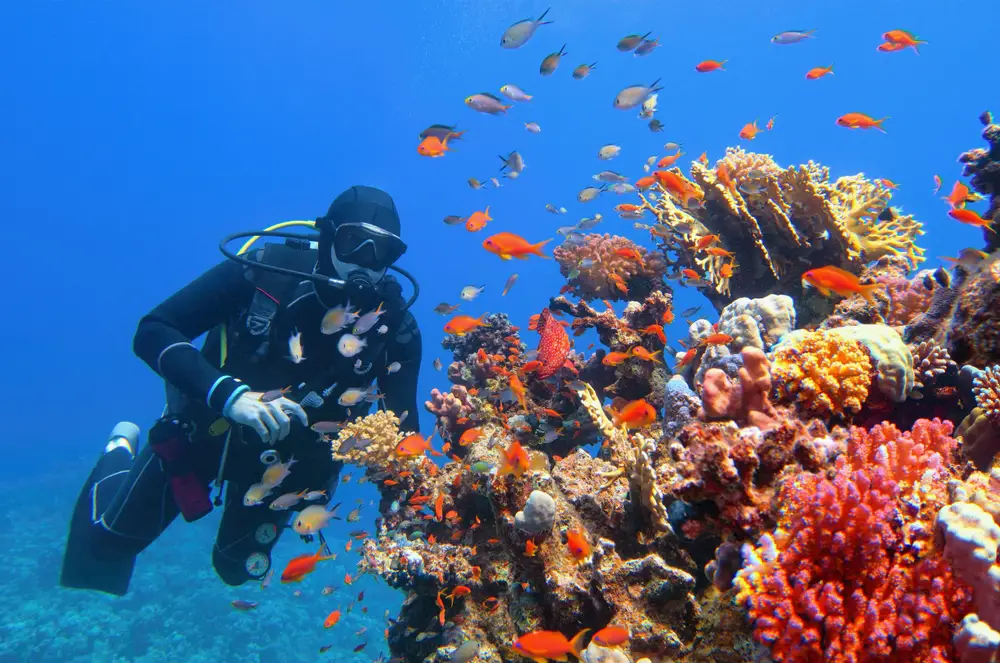
The Great Barrier Reef, the largest coral reef system in the world, is under threat from rising sea temperatures, ocean acidification, and pollution. Corals are the building blocks of the reef ecosystem, providing habitat and food for countless marine species. The loss of corals would have devastating consequences for marine biodiversity and the millions of people who depend on the reef for their livelihoods. Efforts to protect the reef involve reducing carbon emissions and controlling local threats like pollution and overfishing.
When you think about the Great Barrier Reef, you might imagine a vibrant underwater world teeming with life. Yet, this natural wonder is on the brink of collapse if urgent action is not taken. Supporting initiatives that address climate change and promote sustainable tourism can help safeguard this remarkable ecosystem. By doing so, you ensure future generations can continue to marvel at its beauty and biodiversity.
12. Nassau Grouper
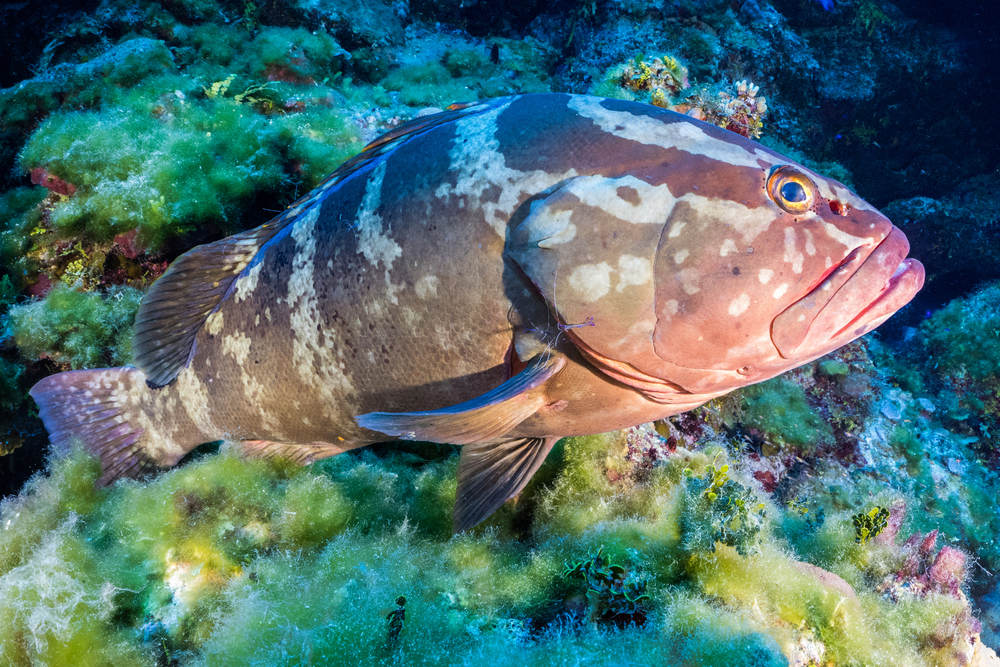
The Nassau grouper, a large reef fish found in the Caribbean, is critically endangered due to overfishing and habitat loss. This species is vital for maintaining the health of coral reefs, as they help control populations of other fish and invertebrates. Their decline has been exacerbated by the targeting of spawning aggregations, which has severely reduced their numbers. Efforts to protect Nassau groupers involve implementing fishing restrictions and creating marine protected areas.
You might appreciate the significance of these fish in supporting the balance of coral reef ecosystems. The challenges they face underscore the importance of sustainable fishing practices and marine conservation. By advocating for measures that protect spawning sites and reduce fishing pressures, you can aid in their recovery. It’s a cause that highlights the interconnectedness of marine life and the need for comprehensive conservation strategies.
13. Chilean Devil Ray
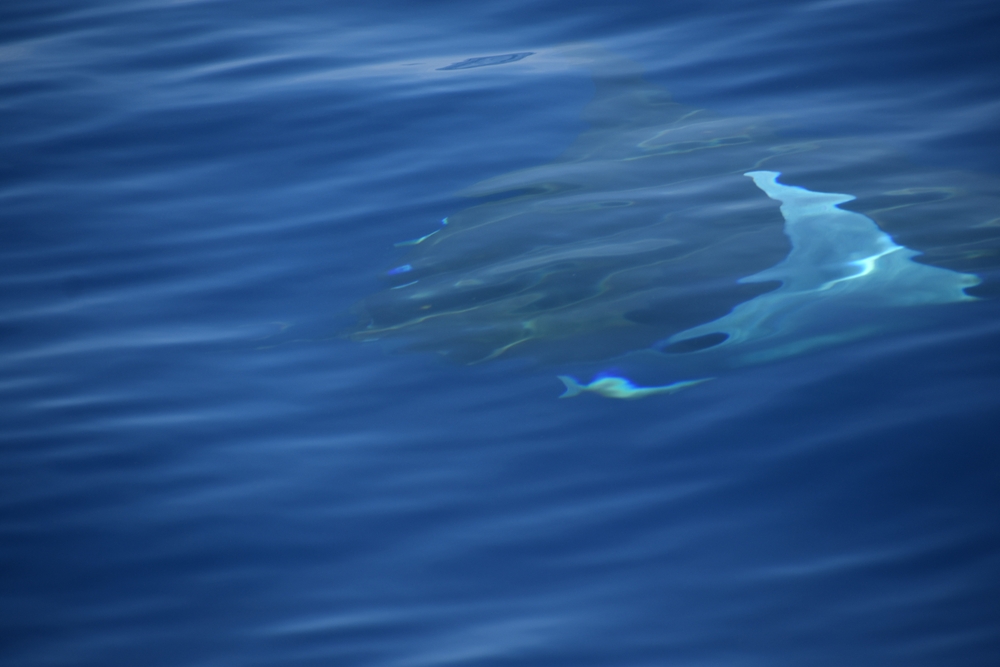
The Chilean devil ray, an elusive species known for its graceful swimming, inhabits the deep waters of the eastern Pacific Ocean. These rays are threatened by bycatch in industrial fishing operations and habitat degradation. As filter feeders, they play a crucial role in the marine food web and nutrient cycling. Their decline could have broader implications for ocean ecosystems and the balance of marine life.
Your interest in these mysterious creatures might inspire you to explore the wonders of deep-sea life. Despite their enigmatic nature, Chilean devil rays face significant threats from human activities. Supporting efforts to reduce bycatch and protect deep-sea habitats can aid in their conservation. By raising awareness and advocating for sustainable fishing practices, you contribute to the preservation of these remarkable rays.
14. Mediterranean Monk Seal
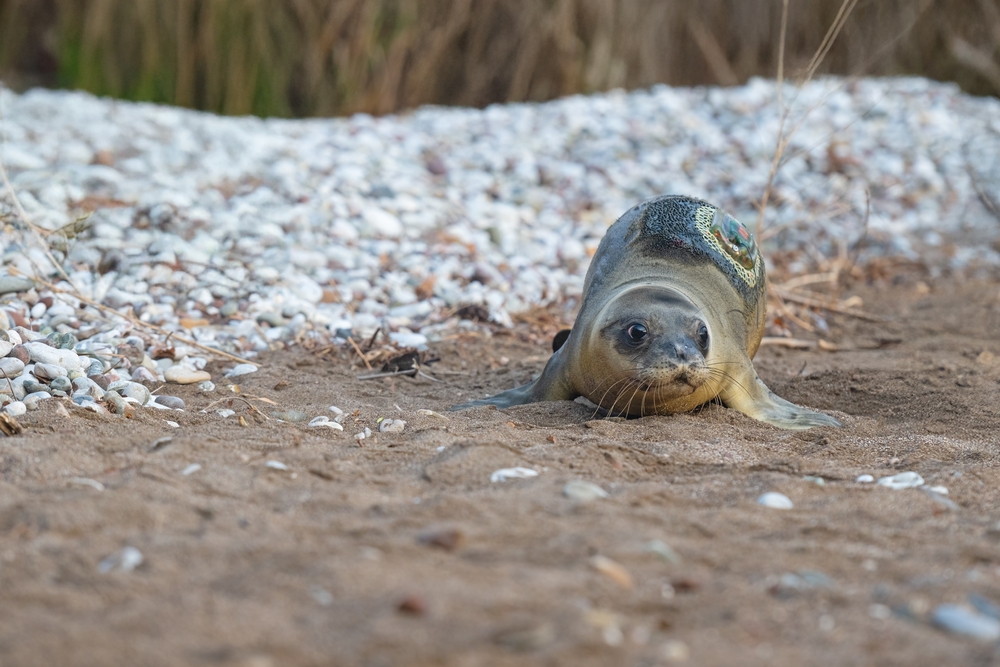
The Mediterranean monk seal is one of the most endangered marine mammals in the world, with as few as 700 individuals remaining. Habitat loss, human disturbance, and entanglement in fishing gear are the primary threats to their survival. These seals are important indicators of the health of the Mediterranean marine environment. Protecting them involves safeguarding their habitats and reducing human-induced threats.
When you think about the Mediterranean, you might picture a region rich in history and biodiversity. The plight of the monk seal is a stark reminder of the fragility of this ecosystem and the need for concerted conservation efforts. By supporting initiatives focused on habitat protection and sustainable tourism, you can help protect these seals. It’s an opportunity to contribute to the preservation of a unique and irreplaceable part of the Mediterranean’s natural heritage.
15. Leatherback Sea Turtle
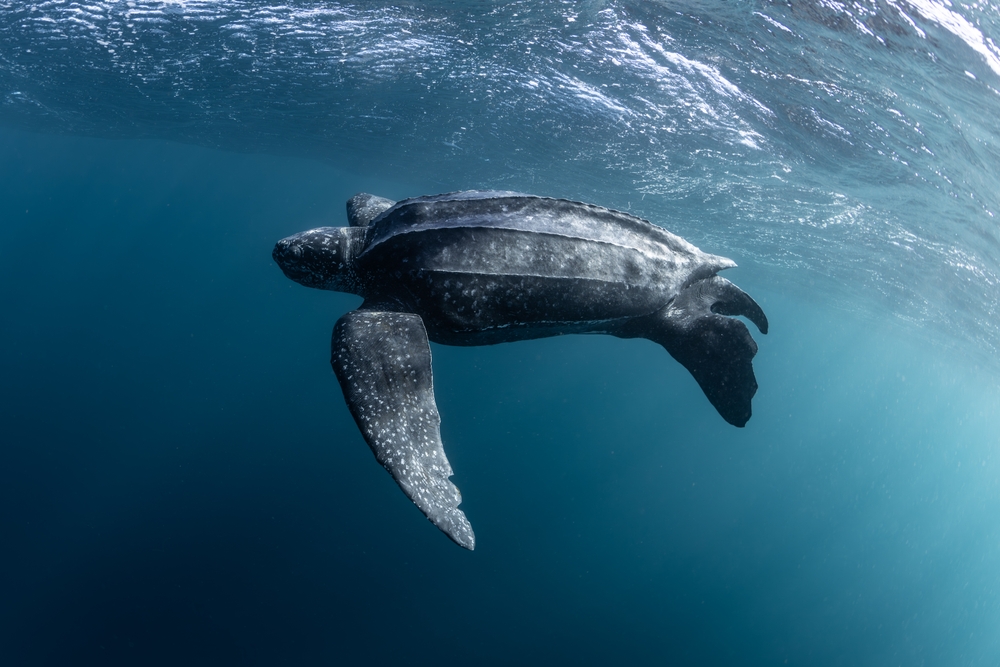
The leatherback sea turtle, the largest of all living turtles, is critically endangered due to threats such as bycatch, habitat loss, and climate change. These turtles are known for their long migratory journeys, crossing entire oceans to reach their nesting sites. Their decline has significant implications for the ecosystems they inhabit, as they play a role in maintaining the health of marine habitats. Conservation efforts focus on protecting nesting sites and reducing bycatch in fisheries.
Your admiration for these ancient mariners might lead you to wonder about the challenges they face on their long journeys. The leatherback’s plight is emblematic of the broader issues facing marine biodiversity. By supporting initiatives that protect nesting beaches and promote turtle-friendly fishing practices, you can aid in their conservation. It’s a reminder of the importance of global cooperation and collective action in addressing the challenges facing our oceans.
